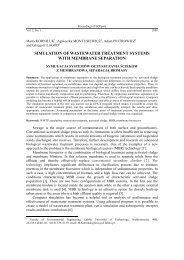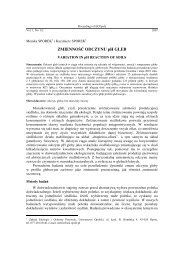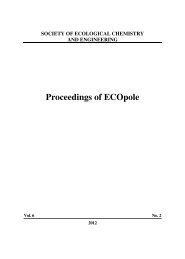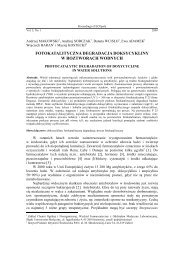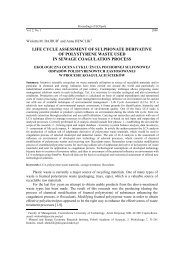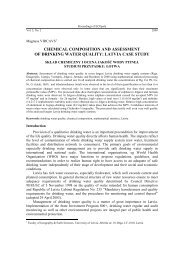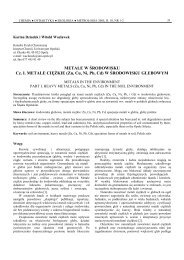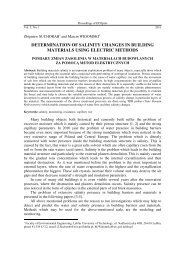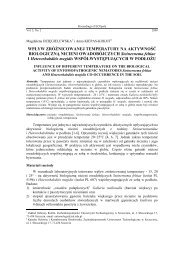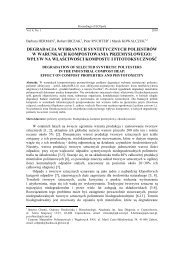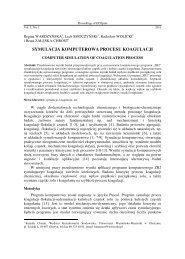HEAVY METALS BIOSORPTION FROM AQUEOUS SOLUTION BY ...
HEAVY METALS BIOSORPTION FROM AQUEOUS SOLUTION BY ...
HEAVY METALS BIOSORPTION FROM AQUEOUS SOLUTION BY ...
Create successful ePaper yourself
Turn your PDF publications into a flip-book with our unique Google optimized e-Paper software.
86<br />
Sławomir Wierzba<br />
concentrations for Cu(II) and Zn(II). Samples were taken at desired intervals and were<br />
subsequently centrifuged at 4000 rpm for 20 min. The impact of the solution pH on the<br />
metal biosorption was investigated in the same way except that the initial pH of the<br />
solutions was adjusted from 4 to 8 with the addition of either 0.1 M HNO3 or 0.1 M NaOH.<br />
Desorption of Cu(II) and Zn(II) from previously loaded living and non-living Pseudomonas<br />
sp. G1 was studied by using 0.1 M HCl as eluent. The concentrations of initial and final<br />
Cu(II) and Zn(II) in the biosorption experiments were determined spectrophotometrically in<br />
a spectrophotometer Photolab Spectral. The amount of metal adsorbed by bacterial biomass<br />
was calculated from the differences between the metal quantity added to the biomass and<br />
the metal content of the supernatant using the following equation (1):<br />
( C − C )<br />
0 e ⋅ V<br />
Q = (1)<br />
m<br />
where Q [mg · g –1 ] is the adsorption quantity at the equilibrium, C0 and Ce are the initial<br />
and equilibrium concentrations [mg · dm –3 ], V the volume of solution [dm 3 ], m the weight<br />
of biomass [g] in grams.<br />
Results and discussion<br />
The pH value is one of the most important parameters that influence the biochemical<br />
behaviors of metal ions in an aqueous system, as the pH value of the system directly affects<br />
the metal speciation in the solution, which can change the biosorption capability [3-5].<br />
Fig. 1. Effect of initial pH on biosorption capacity of (a) Cu(II) and (b) Zn(II) by living and non-living<br />
Pseudomonas sp. G1<br />
Figures 1a, b summarizes the results of the adsorption of Cu(II) and Zn(II) ions by<br />
biomass Pseudomonas sp. G1 as a function of pH. In all cases, metal biosorption by the<br />
biomass increases with increasing pH till it reaches a maximum after which the metal<br />
biosorption decreases. It was found that the optimum pH for Cu(II) removal by living and<br />
nonliving cells was 5.0, while it was 6.0 and 5.0, respectively, for Zn(II) removal. These<br />
results suggest that the adsorption of metals on the biomass surface is controlled by ionic



